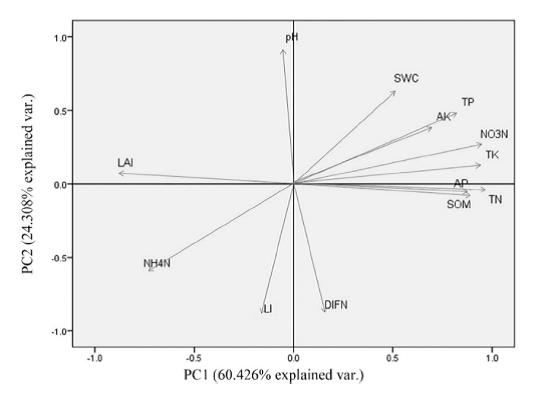

Under the guidance of Ren Hai, a researcher at the Ecological and Environmental Science Research Center of the South China Botanical Garden, Chinese Academy of Sciences, and in cooperation with Wei Xiao, a researcher at the the Guangxi Institute of Botany, Guangxi Province and the Chinese Academy of Science and the Guangxi Nonggang National Nature Reserve, student Xu Zhanhui made progress in the study of the survival status and conservation strategies of Camellia longzhouensis J.Y. Luo, a rare and endangered plant, and pointed out that according to the current status of this species, it should be recategorized as Critically Endangered (CR) according to IUCN Red List Categories and Criteria. The related study was recently published in Global Ecology and Conservation.
Camellia longzhouensis J.Y. Luo (Theaceae) is an evergreen shrub or small tree ( Figure 1). It is named because it is distributed in Longzhou, Guangxi and the flowers are golden yellow. It is a member of the sect. Chrysanthaare Chang, which is known as "the Giant panda of the plant kingdom" and "the Queen of Camellias". Its flowers can be ornamented or made into a health-care tea, and it is both endangered, economically valuable, endemic, and of high scientific value. In 2015, the International Union for Conservation of Nature separated this species from C. chrysanthoides and assessed it as Endangered B1ab(iii), noting that it is under threat of habitat degradation.
Under the guidance of Ren Hai, a researcher of South China Botanical Garden, Chinese Academy of Sciences, and in cooperation with Wei Xiao, a researcher of Guangxi Institute of Botany, Chinese Academy of Sciences and the Nonggang National Nature Reserve, student Xu Zhanhui systematically studied the distribution, habitat characteristics, population structure, threat factors and comprehensive protection strategies of Camellia longzhouensis J.Y. Luo.
The study found that Camellia longzhouensis J.Y. Luo was a narrowly distributed species that only distributed in the karst secondary forest with fertile soil in the Nonggang National Nature Reserve and along its edge, and there were only 58 individuals in three subpolulations, with few young individuals and poor population structure. Threats to the species included biological factors such as competition from several species (Hydnocarpus hainanensis and Streblus tonkinensis) with similar niches and environmental factors such as soil N and P contents and light intensity. In addition, illegal excavation and natural reproduction obstacles also had contributed to the decline of the population size.
Based on the results of the research, the researchers proposed an integrated conservation strategy for C. longzhouensis: (1) expanding the area of Nonggang National Nature Reserve to include all wild individuals of C. longzhouensis; (2) marking all wild individuals, inspecting them regularly and cleaning up competitors to achieve effective in situ conservation; (3) collecting the branches of all wild individuals for grafting or cutting, and establish a full genetic diversity resource nursery; (3) collecting the branches of all wild individuals for grafting or cutting, and establish a full genetic diversity resource nursery; (4) establishing more ex situ conservation populations in botanical gardens with similar climate; (5) establishing augmentation population through introducing individuals from other subpopulations into the three original subpopulations to improve the genetic diversity; (6) establishing some renewable translocation populations outside the Nonggang National Nature Reserve to cope with the possible impact of climate change on the survival of this species; (7) further optimizing the propagation and cultivating technology, and create the soil conditions and light intensity environment similar to the original habitat; (8) promoting the commercial production of C. longzhouensis to reduce the survival pressure of wild plants.
"The Nonggang National Nature Reserve has optimized its conservation actions according to the above strategy." Xu Zhanhui said, while saying that this strategy can be readily applied to protect other endangered plants with economic value in karst poor regions.


Figure 2 Principal component analysis (PCA) of the habitat properties of Camellia longzhouensis J.Y. Luo community

